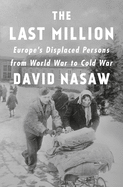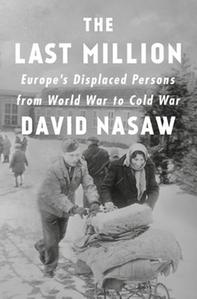
 The Last Million: Europe's Displaced Persons from World War to Cold War sheds light on what to many readers will be an unfamiliar legacy of the Second World War. David Nasaw, author of sweeping biographies such as Andrew Carnegie, provides a characteristically thorough and impressively researched account of the roughly one million displaced persons who found themselves stranded in Germany after the end of the war. After millions of forced laborers and POWs were repatriated, the Allied nations overseeing chunks of war-ravaged Germany were left with the problem of those who refused repatriation or had no home to return to. These Last Million included concentration camp survivors, Eastern Europeans whose lands had been occupied or annexed by the Soviet Union, Nazi collaborators and outright war criminals. As the allied countries decided what to do with these displaced persons (DPs), they were housed in what were meant to be temporary camps that over years transformed into island communities.
The Last Million: Europe's Displaced Persons from World War to Cold War sheds light on what to many readers will be an unfamiliar legacy of the Second World War. David Nasaw, author of sweeping biographies such as Andrew Carnegie, provides a characteristically thorough and impressively researched account of the roughly one million displaced persons who found themselves stranded in Germany after the end of the war. After millions of forced laborers and POWs were repatriated, the Allied nations overseeing chunks of war-ravaged Germany were left with the problem of those who refused repatriation or had no home to return to. These Last Million included concentration camp survivors, Eastern Europeans whose lands had been occupied or annexed by the Soviet Union, Nazi collaborators and outright war criminals. As the allied countries decided what to do with these displaced persons (DPs), they were housed in what were meant to be temporary camps that over years transformed into island communities.
The Last Million became an international issue, pawns in the burgeoning Cold War, and much of Nasaw's book concerns the political wrangling that eventually led to the resettlement of the Last Million in countries all over the world. While delving into the weeds of political compromise and legislation, Nasaw never loses sight of the hopes and struggles of the people at the center. Nasaw captures the stories of dozens of DPs and their families, and provides a vibrant account of the displaced persons camps' transformation into mini-nations with their own schools, houses of worship and complex politics. In Nasaw's account, many of the camps became incubators for nationalism, including Eastern Europeans from nations dominated by the Soviets, as well as the hundreds of thousands of Jews who became convinced that "there was only one, just one salvation... Palestine."
The Last Million showcases Nasaw's deft handling of complexity--not only the number of global controversies that the Displaced Persons issue fed into, but the morally complex issues of collaboration. Many DPs had served in SS units and participated in the murder of Jews, but some had been drafted into military units under threat or performed innocuous administrative tasks. Sadly, Nasaw's account is one where moral questions were often coopted by political convenience, with nations such as the United States eventually letting in hundreds of war criminals. The Last Million becomes an account of new beginnings, sometimes for people who didn't deserve them. --Hank Stephenson, manuscript reader, the Sun magazine
Shelf Talker: The Last Million meticulously follows the fate of the approximately one million displaced persons stranded in Germany after World War II, including concentration camp survivors and war criminals.

